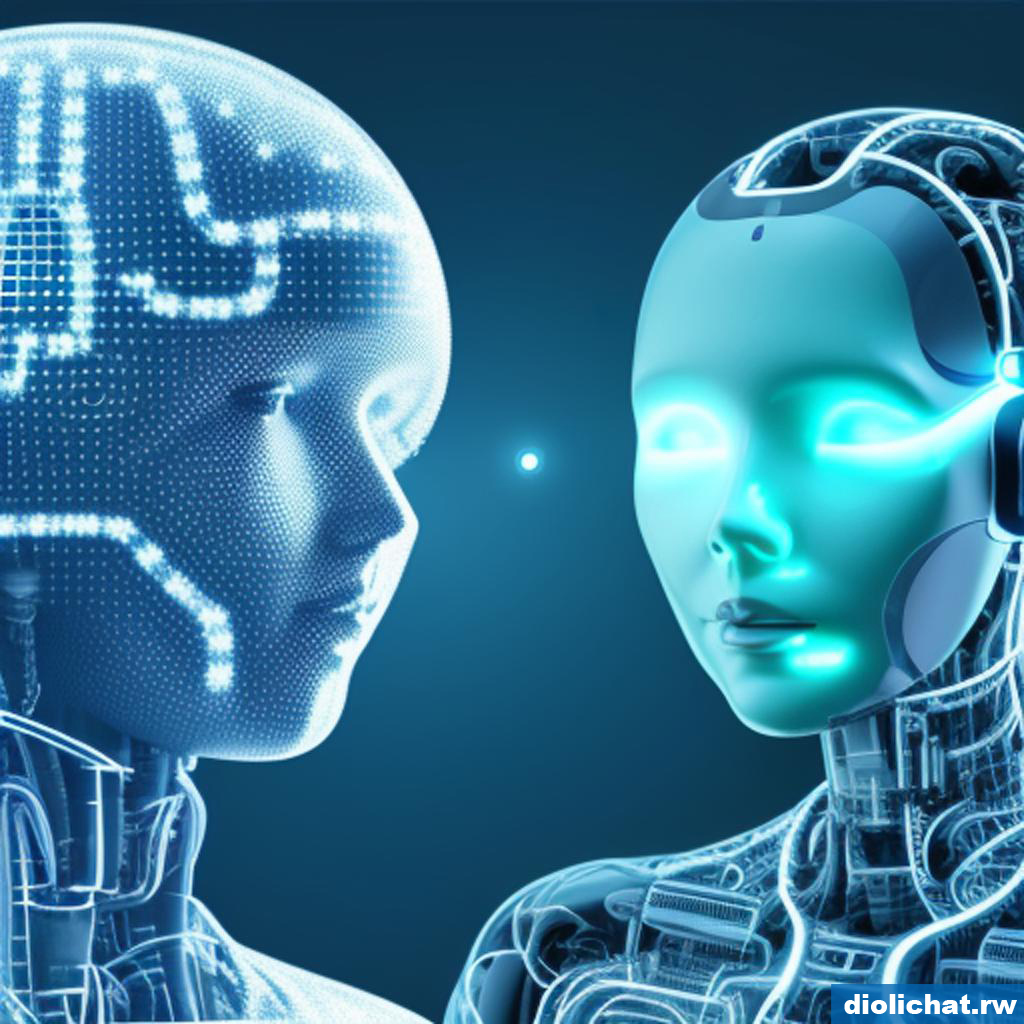Change Language
10 TRENDS SHAPING THE CHANGING LANDSCAPE OF SOFTWARE DEVELOPMENT
June 26, 2023.11

Introduction
Overview of the changing landscape of software development
In today's rapidly evolving technological landscape, software development has become an integral part of our daily lives. From the apps on our smartphones to the systems that power industries, software engineers play a crucial role in designing, developing, and maintaining the software that drives innovation and productivity. However, as new technologies emerge and customer demands evolve, the future of software development is set to undergo significant changes.
Our speculations for the future suggest that artificial intelligence (AI), machine learning, and data science will have a profound impact on all spheres of life, automating most jobs worldwide. With the increasing reliance on software code, experts in software engineering will be in high demand to develop, maintain, and improve the functionality of the software running around the world. The future holds exciting opportunities and challenges for software engineers, as they adapt to the ever-changing digital world.
Trend #1: Agile Development
Importance of agile development in software development
Agile development has revolutionized the way software is built and delivered. This iterative and collaborative approach emphasizes flexibility, adaptability, and customer satisfaction. By breaking down complex projects into smaller, manageable tasks, agile development enables teams to respond quickly to changing requirements and deliver high-quality software with shorter release cycles.
How agile development is changing the way software is built and delivered
Agile development methodologies, such as Scrum and Kanban, promote cross-functional teams, frequent communication, and continuous integration. By involving stakeholders throughout the development process and prioritizing user feedback, agile development ensures that software solutions meet customer expectations and deliver value. This iterative approach also allows for faster problem-solving, reduced rework, and increased transparency, resulting in higher customer satisfaction and improved time-to-market.
Trend #2: DevOps

Importance of DevOps in software development
DevOps, a collaboration between development and operations teams, has emerged as a critical trend in software development. It aims to streamline the software development lifecycle by integrating development, testing, deployment, and operations processes. By breaking down silos and fostering a culture of collaboration, DevOps enables faster delivery of software while maintaining quality and reliability.
How DevOps is streamlining the development process and improving collaboration between teams
DevOps practices, such as continuous integration, continuous delivery, and infrastructure automation, enable seamless collaboration between development and operations teams. By automating manual tasks, implementing version control, and leveraging cloud infrastructure, DevOps reduces the risk of errors, accelerates deployment, and enhances the overall software development process. This collaborative approach also encourages shared responsibility, empowers teams to take ownership of their code, and fosters a culture of innovation and continuous improvement.
Trend #3: Cloud Computing

Importance of cloud computing in software development
Cloud computing has revolutionized the way software is deployed, accessed, and scaled. By leveraging remote servers and virtualization technologies, cloud computing offers on-demand access to computing resources, storage, and services over the internet. This scalability and flexibility provide software developers with the infrastructure needed to build and deploy applications quickly and cost-effectively.
How cloud computing is transforming the way software is deployed and accessed
With cloud computing, software developers can focus on writing code rather than managing hardware infrastructure. Cloud platforms, such as Amazon Web Services (AWS), Microsoft Azure, and Google Cloud Platform, offer a wide range of services, including computing power, databases, and AI capabilities, which can be easily integrated into software solutions. This allows for faster time-to-market, improved scalability, and reduced operational costs. Additionally, cloud-based software can be accessed from anywhere, anytime, enabling seamless collaboration and remote work.
Trend #4: Artificial Intelligence and Machine Learning

Importance of AI and machine learning in software development
AI and machine learning have become integral to software development, enabling intelligent automation, predictive analytics, and personalized user experiences. By analyzing vast amounts of data, AI algorithms can identify patterns, make predictions, and automate routine tasks, freeing up software engineers to focus on more complex and creative problem-solving.
How AI and machine learning are being used to enhance software capabilities and user experiences
AI-powered chatbots, recommendation systems, and virtual assistants are just a few examples of how AI and machine learning are transforming software applications. These technologies can understand natural language, recognize images, and even mimic human conversation, providing users with personalized and interactive experiences. By leveraging AI and machine learning, software developers can build intelligent applications that adapt to user preferences, improve decision-making, and enhance overall usability.
Trend #5: Internet of Things (IoT)

Importance of IoT in software development
The Internet of Things (IoT) has opened up new opportunities and challenges for software developers. With billions of connected devices, ranging from smart homes to industrial sensors, IoT generates vast amounts of datathat can be analyzed and used to create innovative solutions. Software engineers play a critical role in developing IoT applications, managing data, ensuring security, and optimizing performance.
How IoT is creating new opportunities and challenges for software developers
IoT presents unique challenges for software development, such as handling real-time data streaming, maintaining low latency, and ensuring interoperability between disparate devices and systems. To address these challenges, software engineers need to develop expertise in IoT-specific technologies and protocols, such as MQTT, CoAP, and LWM2M. Additionally, the vast amount of data generated by IoT devices requires robust data management, analytics, and security solutions, driving demand for skilled software engineers in these areas.
Trend #6: Mobile App Development
Importance of mobile app development in software development
With the proliferation of smartphones and tablets, mobile app development has become a vital aspect of software development. Mobile apps are not only changing the way we consume content and interact with digital services but also creating new business opportunities across various industries. Software developers must adapt to the increasing demand for mobile applications, develop expertise in mobile platforms and frameworks, and stay up-to-date with emerging trends in mobile technology.
How mobile app development is shaping the way software is consumed and used by users
Mobile apps have transformed the user experience, offering personalized, location-based, and context-aware content and services. By leveraging mobile device capabilities, such as GPS, cameras, and sensors, software developers can create immersive and interactive experiences tailored to individual users. Moreover, mobile apps enable businesses to engage customers, streamline operations, and generate new revenue streams, further driving the demand for skilled mobile app developers.
Trend #7: Cybersecurity

Importance of cybersecurity in software development
As digital systems become increasingly interconnected and data breaches become more frequent, cybersecurity has emerged as a top priority in software development. Ensuring the security of user data and protecting against cyber threats is a critical aspect of building reliable and trustworthy software solutions. Software engineers must be well-versed in security best practices, encryption techniques, and vulnerability assessment tools to develop secure applications and safeguard sensitive information.
How cybersecurity is becoming a top priority in software development to protect user data and privacy
By integrating security practices into the software development lifecycle, developers can identify and address vulnerabilities early on, minimizing the risk of data breaches and cyberattacks. This includes adopting secure coding practices, performing regular code reviews, and conducting penetration testing to ensure that applications are resistant to common attack vectors. Additionally, software engineers should stay informed about emerging security threats, compliance requirements, and industry standards to build software that provides robust protection for user data and privacy.
Trend #8: Low-code/No-code Development
Importance of low-code/no-code development in software development
Low-code and no-code development platforms have emerged as powerful tools for democratizing software development, empowering non-technical users to build their own software solutions without extensive programming knowledge. These platforms offer drag-and-drop interfaces, pre-built templates, and visual design tools, enablingusers to create functional applications with minimal coding. The rise of low-code/no-code development has opened up new possibilities for rapid prototyping, innovation, and collaboration between technical and non-technical stakeholders.
How low-code/no-code development is empowering non-technical users to build their own software solutions
Low-code/no-code development platforms eliminate the traditional barriers to entry in software development by providing intuitive interfaces and simplified workflows. This allows business users, subject matter experts, and citizen developers to contribute directly to the software development process, reducing the reliance on IT departments and accelerating time-to-market. While these platforms may not replace the need for skilled software engineers, they complement their expertise and enable cross-functional teams to collaborate more effectively.
Trend #9: Blockchain Technology

Importance of blockchain technology in software development
Blockchain technology has gained significant attention in recent years, offering decentralized, secure, and transparent solutions for various industries. In software development, blockchain has the potential to revolutionize data management, improve trust in transactions, and enable new business models. Software engineers need to understand the fundamentals of blockchain, such as distributed ledger technology, smart contracts, and consensus algorithms, to leverage its benefits and create innovative applications.
How blockchain technology is revolutionizing the way data is stored and transactions are conducted
Blockchain technology provides a tamper-proof and immutable record of transactions, eliminating the need for intermediaries and enhancing trust between parties. It enables secure peer-to-peer transactions, real-time auditing, and traceability of assets, making it suitable for industries like finance, supply chain, and healthcare. Additionally, blockchain-based decentralized applications (DApps) can empowerusers to have more control over their data and participate in decentralized networks, promoting transparency and accountability. As software engineers explore the potential of blockchain technology, they can create innovative solutions that transform industries and reshape traditional business models.
Trend #10: Continuous Integration and Continuous Deployment (CI/CD)
Importance of CI/CD in software development
Continuous Integration and Continuous Deployment (CI/CD) practices have become essential in modern software development workflows. CI/CD enables developers to automate the process of building, testing, and deploying software, ensuring faster time-to-market, higher quality, and greater agility. By automating repetitive tasks and establishing a robust pipeline, software engineers can focus on delivering value and iterating on software solutions.
How CI/CD is improving the speed and efficiency of software delivery
CI/CD pipelines enable developers to integrate code changes frequently, run automated tests, and deploy software to production environments with minimal manual intervention. This continuous feedback loop allows for early detection of bugs, faster bug fixes, and immediate delivery of new features to end-users. Additionally, CI/CD promotes collaboration between development, testing, and operations teams, reducing friction and ensuring that software solutions meet customer needs and expectations. By embracing CI/CD practices, software engineers can streamline the development process, improve efficiency, and deliver high-quality software consistently.
Conclusion
Summary of the 10 trends shaping the changing landscape of software development and their impact on the future
The future of software development is brimming with exciting possibilities. From agile development and DevOps to cloud computing, AI,and blockchain technology, software engineers need to adapt to these changing trends to stay relevant and thrive in the industry. The demand for skilled software engineers will continue to rise as AI, machine learning, and data science automation become more prevalent. Additionally, software engineers will need to possess higher levels of ethics and integrity to work in data privacy and transparent AI applications.
The emergence of low-code/no-code development platforms empowers non-technical users to contribute to software development, while cybersecurity remains a top priority to protect user data and privacy. Mobile app development and IoT present new opportunities and challenges, requiring software engineers to stay updated with emerging trends and technologies.
As the software development landscape continues to evolve, continuous improvement and adaptation will be key to success. By embracing these trends and acquiring the necessary skills, software engineers can shape the future of software development and contribute to the advancement of technology in various industries.
Comments
Cedrox: hejuru cyane!!!!!!!!!!
Diolichat Team
Welcome to our professional blog, your go-to resource for personal development, health and fitness, travel and adventure, technology insights, and lifestyle inspiration. Join us as we guide you on a transformative journey of growth and success. Stay updated with the latest health trends, discover tips for unforgettable travel experiences, explore the world of technology, and find inspiration for your lifestyle choices. Our blog delivers valuable insights and expert advice in a concise and professional manner. Get ready to elevate your life with our engaging content. Welcome aboard!
Popular Posts
-
 Exploring African Fashion: A Celebration of Diversity and Style
Exploring African Fashion: A Celebration of Diversity and Style
Lifestyle and Fashion -
 Exploring African Fashion: A Celebration of Diversity and Style
Exploring African Fashion: A Celebration of Diversity and Style
Lifestyle and Fashion -
 Unraveling the Secrets of Success: 10 Habits of Highly Successful People
Unraveling the Secrets of Success: 10 Habits of Highly Successful People
Lifestyle and Fashion -
 Unraveling the Secrets of Success: 10 Habits of Highly Successful People
Unraveling the Secrets of Success: 10 Habits of Highly Successful People
Lifestyle and Fashion -
 10 Fitness Tips for a Strong and Healthy Body Introduction
10 Fitness Tips for a Strong and Healthy Body Introduction
Health and Fitness -
 10 Fitness Tips for a Strong and Healthy Body Introduction
10 Fitness Tips for a Strong and Healthy Body Introduction
Health and Fitness -
 Unlock Your Full Potential: The Path to Personal Development and Self-Improvement
Unlock Your Full Potential: The Path to Personal Development and Self-Improvement
Lifestyle and Fashion -
 Unlock Your Full Potential: The Path to Personal Development and Self-Improvement
Unlock Your Full Potential: The Path to Personal Development and Self-Improvement
Lifestyle and Fashion -
 Wanderlust: A Guide to the Most Beautiful Destinations in the World
Wanderlust: A Guide to the Most Beautiful Destinations in the World
Travel and Adventure -
 Wanderlust: A Guide to the Most Beautiful Destinations in the World
Wanderlust: A Guide to the Most Beautiful Destinations in the World
Travel and Adventure -
 The Power of Websites: Unveiling the Latest Impact on Modern Businesses
The Power of Websites: Unveiling the Latest Impact on Modern Businesses
Web Design -
 The Power of Websites: Unveiling the Latest Impact on Modern Businesses
The Power of Websites: Unveiling the Latest Impact on Modern Businesses
Web Design -
 Work Smarter, Not Harder: AI Automation Hacks for a Stress-Free 2024
Work Smarter, Not Harder: AI Automation Hacks for a Stress-Free 2024
Technology and Gadgets -
 Why Do Business in Rwanda: A Growing Opportunity
Why Do Business in Rwanda: A Growing Opportunity
Business -
 Why Do Business in Rwanda: A Growing Opportunity
Why Do Business in Rwanda: A Growing Opportunity
Business -
 Mindfulness and Mental Health: Techniques for Finding Inner Peace
Mindfulness and Mental Health: Techniques for Finding Inner Peace
Health and Fitness -
 Mindfulness and Mental Health: Techniques for Finding Inner Peace
Mindfulness and Mental Health: Techniques for Finding Inner Peace
Health and Fitness -
 From Idea to Reality: A Step-by-Step Guide to Creating Your Own Website
From Idea to Reality: A Step-by-Step Guide to Creating Your Own Website
Web Design -
 From Idea to Reality: A Step-by-Step Guide to Creating Your Own Website
From Idea to Reality: A Step-by-Step Guide to Creating Your Own Website
Web Design -
 Don't Be Left Behind: Why Your Business Needs a Website in 2024 and Beyond!
Don't Be Left Behind: Why Your Business Needs a Website in 2024 and Beyond!
Web Design -
 Boost Your Business Online: How Website Development Can Drive Success
Boost Your Business Online: How Website Development Can Drive Success
Business -
 Positive Vibes Only: Elevate Your Life with the Power of Positivity
Positive Vibes Only: Elevate Your Life with the Power of Positivity
Lifestyle and Fashion -
 Boost Your Business Online: How Website Development Can Drive Success
Boost Your Business Online: How Website Development Can Drive Success
Business -
 Positive Vibes Only: Elevate Your Life with the Power of Positivity
Positive Vibes Only: Elevate Your Life with the Power of Positivity
Lifestyle and Fashion -
 Fashion Trends: Styling Tips for Every Season
Fashion Trends: Styling Tips for Every Season
Lifestyle and Fashion -
 Embracing the Latest Artificial Intelligent AI Innovations of 2023: Transforming the Way We Live and Work
Embracing the Latest Artificial Intelligent AI Innovations of 2023: Transforming the Way We Live and Work
Technology and Gadgets -
 Fashion Trends: Styling Tips for Every Season
Fashion Trends: Styling Tips for Every Season
Lifestyle and Fashion -
 Embracing the Latest Artificial Intelligent AI Innovations of 2023: Transforming the Way We Live and Work
Embracing the Latest Artificial Intelligent AI Innovations of 2023: Transforming the Way We Live and Work
Technology and Gadgets -
 Essential Life Skills: What Everyone Must Know for Success
Essential Life Skills: What Everyone Must Know for Success
Lifestyle and Fashion -
 The Ultimate Guide to Achieving a Healthy and Fit Lifestyle
The Ultimate Guide to Achieving a Healthy and Fit Lifestyle
Health and Fitness -
 The Ultimate Guide to Achieving a Healthy and Fit Lifestyle
The Ultimate Guide to Achieving a Healthy and Fit Lifestyle
Health and Fitness -
 Essential Life Skills: What Everyone Must Know for Success
Essential Life Skills: What Everyone Must Know for Success
Lifestyle and Fashion -
 5 Cool Tech Innovations You Won't Believe Exist
5 Cool Tech Innovations You Won't Believe Exist
Technology and Gadgets -
 Achieving Optimal Health and Fitness: Your Path to a Balanced Life
Achieving Optimal Health and Fitness: Your Path to a Balanced Life
Health and Fitness -
 Achieving Optimal Health and Fitness: Your Path to a Balanced Life
Achieving Optimal Health and Fitness: Your Path to a Balanced Life
Health and Fitness